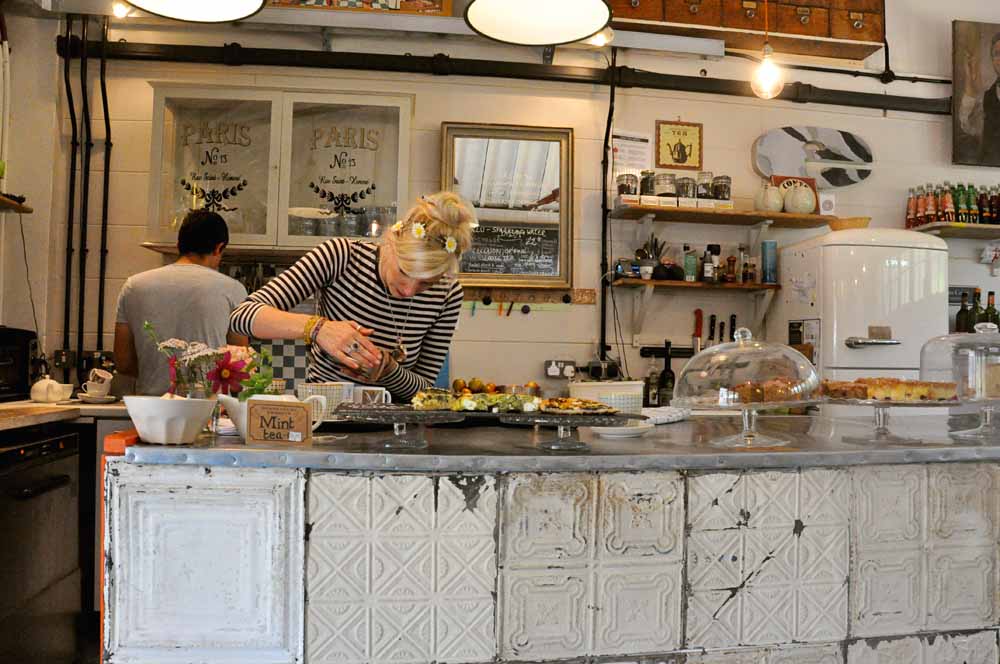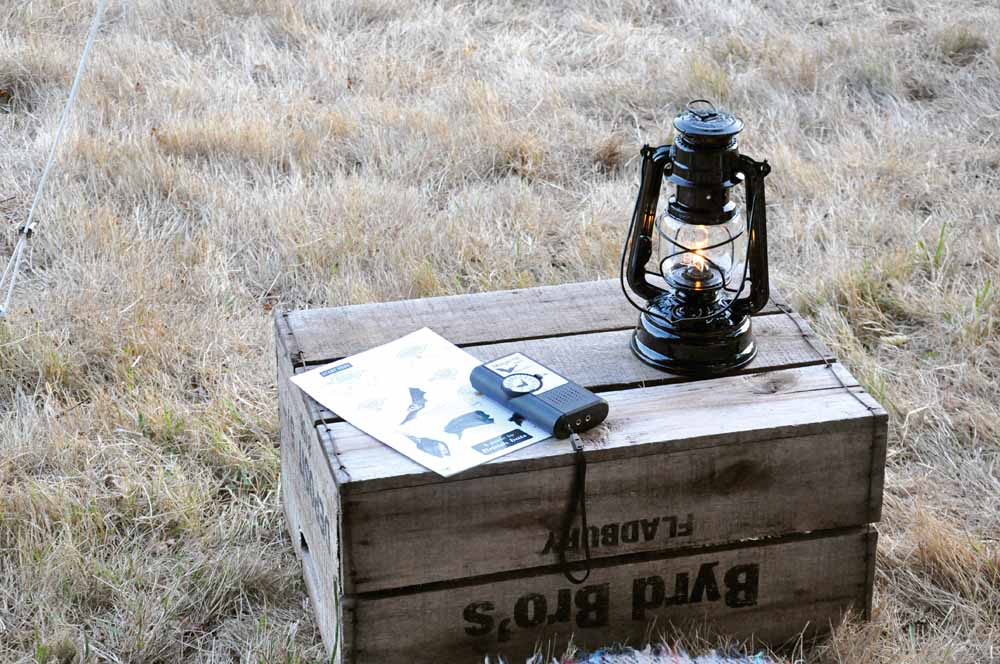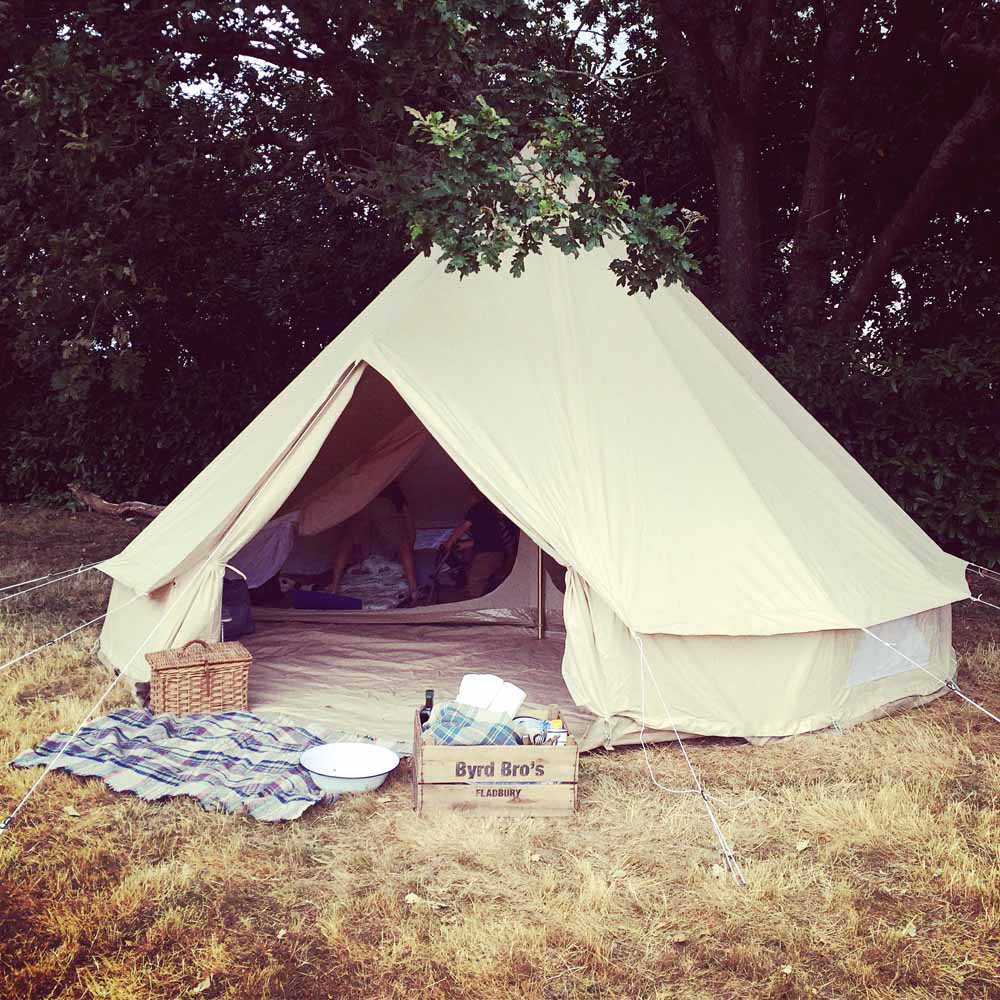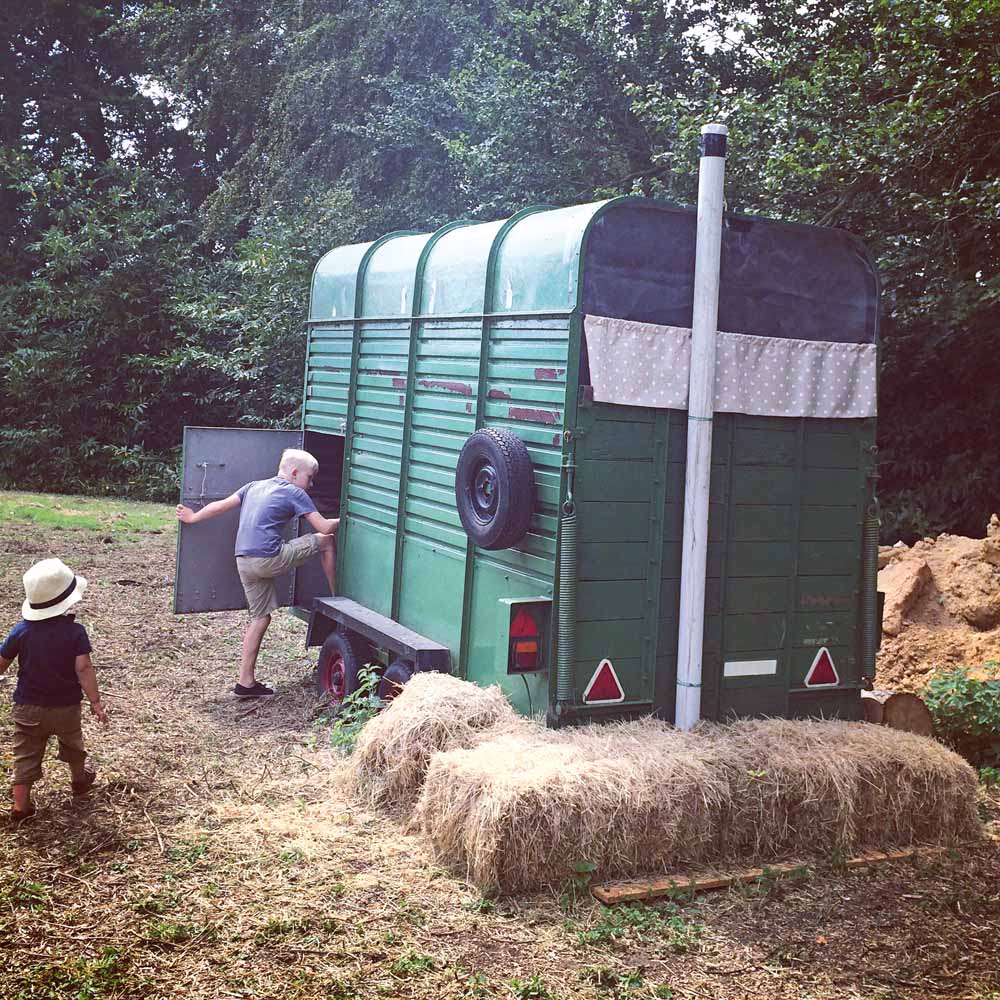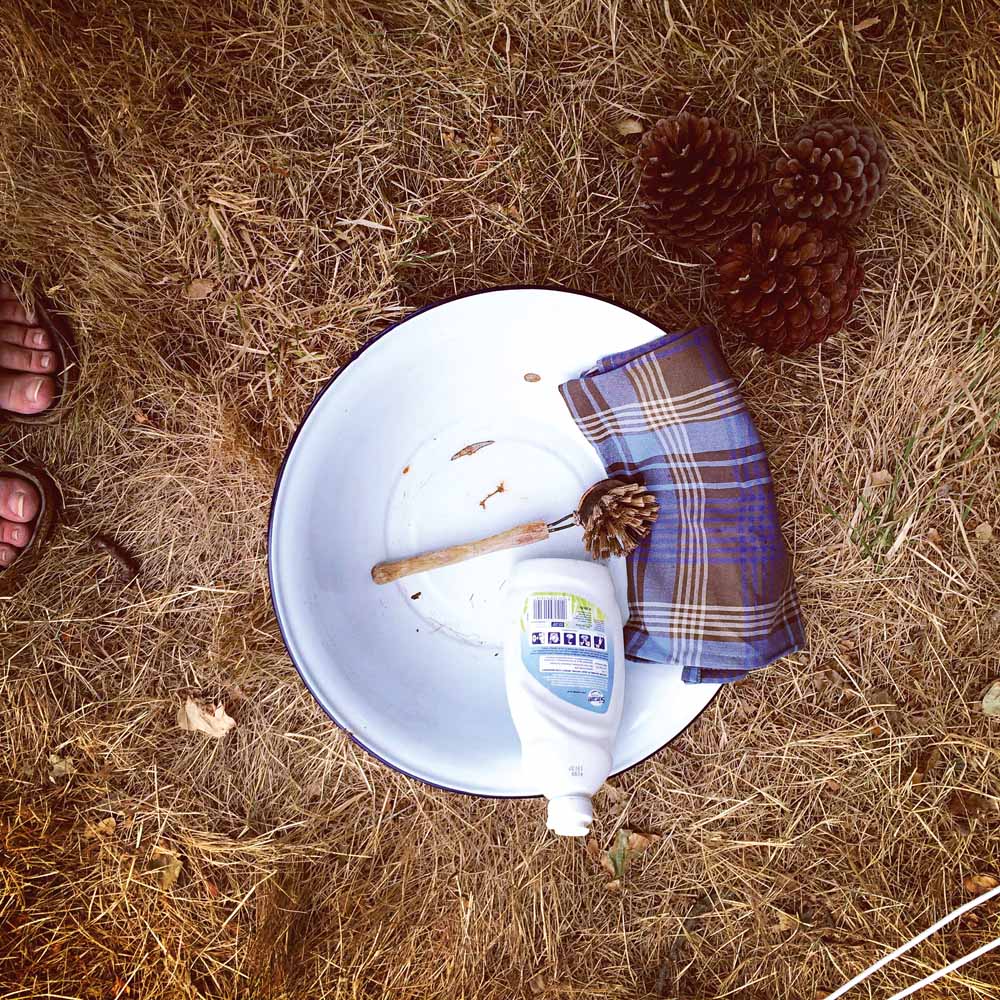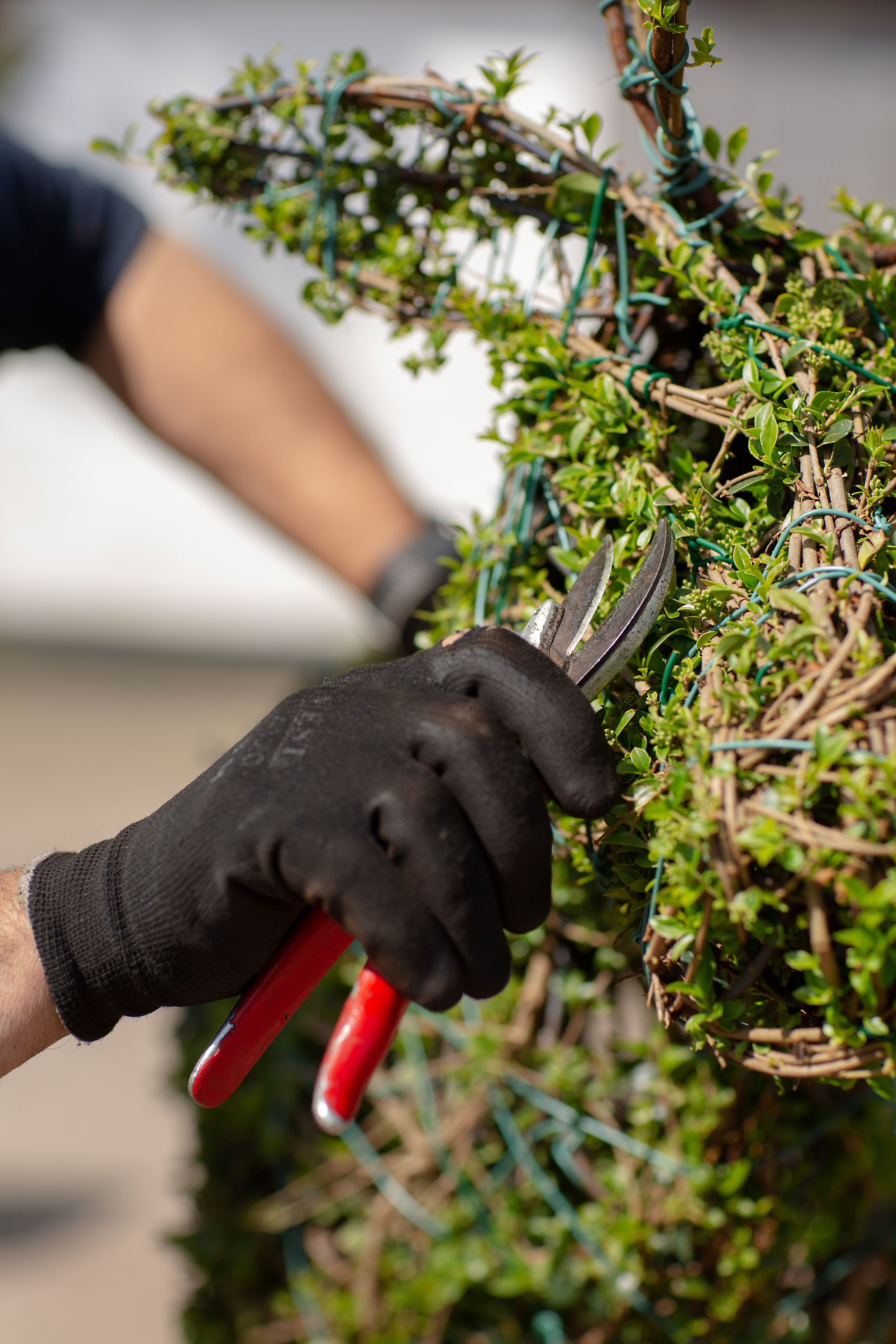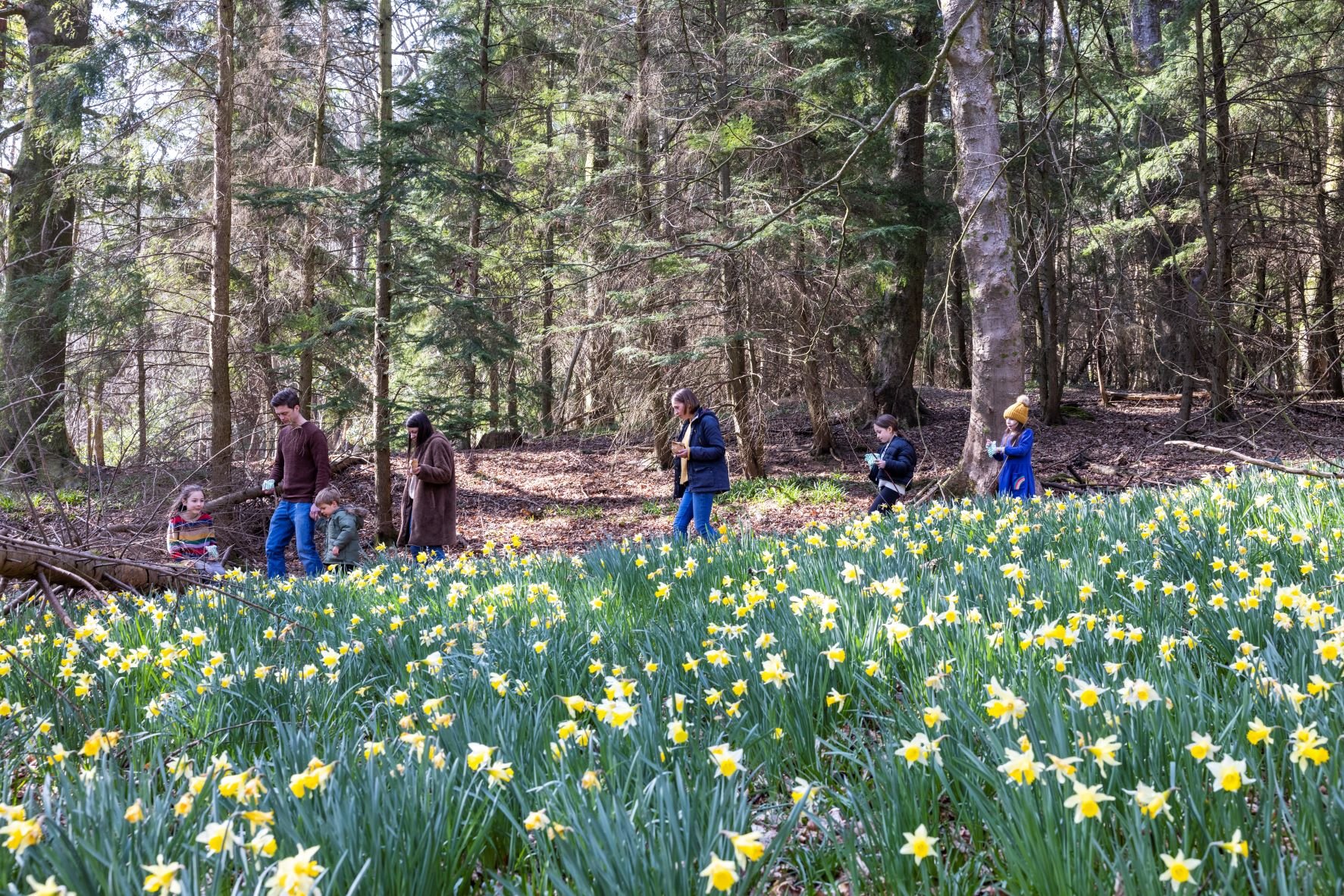Image: Katharine Davies
Staple foods: 3. Milk
An appreciation of milk in infographics
Words: LAURA ROWE Illustrations: VICKI TURNER
MORE THAN SIX BILLION of us around the world enjoy milk, whether in its purest form – drunk by the glass or softening our cereal – or transformed into cream, butter, cheese or yoghurt. Dairy is big business.
The majority of the milk we drink is derived from cattle but other animals can be successfully milked, too – from the more familiar sheep and goat to (perhaps surprisingly) horses and even camels. And while the nutritional content of each varies, fresh milk is undeniably a worthwhile addition to our diet. Cow’s milk, in particular, is a great source of protein, calcium and a whole host of vitamins.
Extracted from Taste: The Infographic Book of Food by Laura Rowe, illustrated by Vicki Turner (Aurum Press)
Read more from the May issue:
More Taste infographics:
Photography: Emma Bradshaw
Escape: Mellow meadow
A weekend away camping in an idyllic Dorset meadow, Emma Bradshaw and family have fun sleeping under the stars, cooking on the campfire – even washing up in the open air.
Our new series comes from online UK travel guide This is Your Kingdom, whose handpicked contributors explore favourite places, special finds and great goings on.
You can read about one we love each month in The Simple Things - turn to page 72 of the May issue for more of this Dorset campsite adventure - and plenty of others at thisisyourkingdom.co.uk.
Emma Bradshaw is a contributor to thisisyourkingdom.co.uk. She has three boys, works for Gloucestershire Wildlife Trust, blogs at bradshawandsons.com and shares glimpses of daily life on Instagram as @_emmabradshaw.
Read more from the May issue:
Read more from This is Your Kingdom:
Photograph: Emily Quinton
How to Instagram flowers
This month in our series on what really goes on inside a home, we fill the house with vases and jugs of cut flowers. Turn to page 114 of the May issue for more of Clare Gogerty's Home Truths: Flowers.
Stylist and blogger Emily Quinton is a whizz on Instagram and posts flower pictures daily. This is how she does it:
1. Choose flowers carefully – not all photograph well. The more you photograph, the more you get to know them. My favourites are stocks, ranunculus, peonies, anemones, tulips and roses.
2. Photograph in natural light. Flowers do not look good under artificial lights. If shooting outside, early morning and late afternoon/early evening are best. If shooting indoors, move near a window to get the best light.
3. Use different vessels and backgrounds to make the most of one bunch of flowers.
4. Choose lighter coloured flowers. They are easier to capture than dark ones. Dark red roses are my nemesis!
5. When flowers are nearly over, cut off the stems and lay down to make flat pictures. Gather plates, linen and notebooks as props. To make flowers last longer, pop in the fridge or in a cool room. Some flowers don’t last like this but peonies, roses and ranunculus will.
Follow @emilyquinton, on Twitter, Instagram and Pinterest
More from the May issue:
Read more gardening posts:
Competition: Win a chair from Galapagos worth £625!
Finding the perfect furniture for your home is a challenge - one that Galapagos loves! Inspired by Midcentury design, Galapagos takes vintage furniture that has stood the test of time, and turns each piece into beautiful, colourful, functional furniture for the modern home.
Using amazing fabrics from innovative new British designers like Korla, Claire Gauddion & Parris Wakefield, each chair or sofa we make is carefully stripped, and remade with environmentally sound internal materials which will stand the test of time and degrade naturally at the end of their life.
Every chair we make is a little piece of history, adding a story to your home, and can be made to order in hundreds of bespoke colourways and fabrics. And, you’re safe in the knowledge that buying from Galapagos, you’re buying an original Midcentury piece that can become your very own future heirloom.
Competition
We are giving away one bespoke Galapagos Bartholomew Cocktail chair worth £625.00, in Bhutan Lattice fabric in either Black (pictured), Navy, or Eau de Nil.
Your chair will be made to order in our Surrey workshops, and delivered to you within 3 weeks.
The winner will be selected at random from all completed entries. This competition ends 3rd June 2016.
Enter the competition
Terms & conditions
By entering this contest, you are consenting to the Simple Things & its partner Galapagos Designs Ltd contacting you with news & special offers in the future.
Your cocktail chair will be made to order depending on your fabric choice. The chair you receive will be an original 1950s German cocktail chair, re-upholstered in your choice of fabric. As all our furniture is vintage, it may vary slightly to the model shown in the photograph. The prize may not be replaced by a cash prize, and cannot be returned.
How to get rid of moths
Moth larvae are most active when the temperature creeps over 10 degrees – about the time our woolies are put away. Act now to prevent moth munchies.
Prevention
l Only put away clean clothes. For moths, dirt is the icing on a woolly cake.
l Pack clothes in vacuum storage bags. Order from lakeland.co.uk
l Larvae loves carpet. Vacuum regularly, especially edges and under furniture.
l Lift and beat rugs.
l Moths like warm, dark spaces, so consider open wardrobes and turning the heat down.
l Lavender, conkers and cinnamon sticks are all natural repellents.
In the event of infestation:
l Put your clothes in plastic bags in the freezer for 72 hours.
l For carpets, blog.labourandwait.co.uk advises dissolving a quarter-pound of rock ammonia in about a half-gallon of boiling water. Immerse a large house-cloth, wring and lay flat on the carpet. Iron with a very hot iron until dry.
Read more:
Give it a grow: Spring onions
WHY GROW THEM?
Easy and fast- growing, spring onions are also very versatile. They make a great addition to the veg patch, work well squeezed in between ornamental plants in a herbaceous border and are very happy in containers. Just make sure they have some sunshine and are in well-drained soil.
WHEN TO SOW?
If you want to be able to enjoy fresh spring onions over the summer, start them off in April and sow every three weeks. There’s no need to start seeds off in small pots, pop them in a prepared channel about 2cm deep – you can make this with the edge of your trowel. It’s important to rake the soil first, removing any weeds, so that it’s a fine, crumbly texture and the seeds can settle into the soil rather than falling in between large lumps.
WHEN TO HARVEST?
Ready in just eight weeks. You’ll get small, but deliciously sweet, crops if you sow in July. Sow in August and September to overwinter for early spring pickings.
WHICH ONE?
‘White Lisbon’ is a crisp, tasty traditional variety but for something a bit different, Sarah Raven recommends ‘North Holland Blood Red’ for its flavour, looks and excellent value for money,as it will bulk up to the size of a red onion if left in the ground.
Read more:
Wild: May cover reveal
That’s you, right there on the cover. Take a moment, put your hands behind your head and soak up the view. There’s no rush. Nibble a slice of cake from your backpack and watch the birds while you munch. Where are you? Scandinavia, Bavaria or a spontaneous picnic at the British seaside? Back home, there’s a jug of flowers on the table, a cat on the mat and the feel of a wood floor beneath bare feet. Embrace the wild and the free, like you’re the May Queen. Find The Simple Things all around you at springtime.
Get hold of your copy of this month's The Simple Things - buy, download or subscribe
View the sampler here
The Domestic Alchemist: Homemade Hayfever Mead
Clear the sinuses with this natural hayfever repellent
MAKES 575ml
KEEPS more than a year
INGREDIENTS
1 handful of elderflowers
1 handful of thyme, leaves and flowers
1 handful of eyebright, leaves and flowers
1 handful of plantain leaves
1 handful of chamomile flowers
1 handful of nettle tops
600ml mead
METHOD
1 Gather the herbs, if using fresh.
2 Remove from stems, then cut up or shred.
3 Mix the herbs together and make a tincture using the mead.
4 If already suffering from hayfever, take 1–2 tsp three times daily. To prevent onset, try 1⁄2-1 tsp. Children can take 10–20 drops three times daily.
Adapted from The Domestic Alchemist: 501 Herbal Recipes for Home, Health and Happiness by Pip Waller (Leaping Hare Press)
Read more:
Listen: Road trip playlist
Roll down the window and let the wind blow back your hair. This month, we’re hitting the road looking for adventure with a head full of songs
Read more:
Win! Picnicware and £500 to spend at Joules (closed)
The secret to a long weekend in your garden (or park or nearby meadow) is having all the right kit and caboodle to hand. Thankfully, Joules is offering a picnic rucksack and coolbag, blanket and two folding chairs, plus a £500 voucher to spend. All you need then is food, family and fun and games.
How to enter
Enter by 15 June. You can see Iceberg Press’ full terms and conditions on page 129 of May's The Simple Things and at icebergpress.co.uk/comprules
A £500 gift card can be spent at Joules’s UK stores (excluding concessions) and online at joules.com. Entrants must be aged 16 or over. Maximum one entry per person. The winner will be announced on or before 29 June 2016. Please note that separate terms and conditions will apply to the gift card.
Win! A spring room refresh with Annie Sloan (closed)
Paints, brushes, stencils, fabrics and more – win everything you need to transform a room from decoration expert Annie Sloan
As the spring sunshine starts to stream in through the windows, who hasn’t dreamt of giving their home a bit of an update? Finally painting that dresser you’ve never got around to, or experimenting with a bit of colour on the walls and recovering your sofa or a favourite armchair to match? We’ve teamed up with Annie Sloan, one of the most respected independent names in the decorating business, to give one lucky reader everything they need to get creative with their interiors, from the paints and brushes right down to the fabrics and finishing touches.
The winner can choose from the Annie Sloan range of Wall Paints, which leave walls with a luxurious, semi-matt finish that belies their hardwearing, scrubbable qualities. For furniture, Chalk PaintTM, available in 33 chic shades, is perfect and so easy to use, requiring no prior sanding or priming. And for your soft furnishings, you can choose from Annie Sloan’s new Coloured Linen range – 10 fabrics in beautifully sophisticated colours dyed to match the Chalk Paint palette.
The winner will also receive a host of tools and accessories with which to complete their transformation, including Annie Sloan brushes, Clear and Dark Soft Wax for different paint finishes, a choice of stencils, and three of Annie’s latest books, full of inspiration and ideas to get you started.
HOW TO ENTER
The prize includes Wall Paint, Chalk PaintTM, wax, various brushes, stencils, Annie Sloan room fragrances and three of Annie’s latest books. For more ideas and inspiration, visit anniesloan.com
Closing date: 15 June 2016
For our full competition rules, visit www.icebergpress.co.uk/comprules
Read more:
The prize includes:
3 x Wall Paint in a colour of your choice - £119.85
2 x Wall Paint brushes, small and large - £31.90
4 x Chalk Paint in a colour of your choice - £75.80
1 x Clear Soft Wax - £8.95
1 x Dark Soft Wax - £8.95
1 x Wax Brush - small - £23.95
2 x Pure Bristle Brushes, small and medium - £31.90
2 x Synthetic Bristle Brushes, small and large - £13.90
2 x Annie Sloan Fragrance of your choice, candle and diffuser - £49.90
1 x Room Recipes Book - £25.00
1 x Chalk Paint Work Book - £14.99
1 x Colour Recipes - £14.99
6 x Stencils, 3 small and 3 large - £65. 94
2m of Coloured Linen in the fabric of our choice - £59.90
Prize bundle worth a total of: £545.92
Image: Cox and Cox
Home: Make the most of your shower
This month, in our series on what really goes on in a home, Clare Gogerty considers bathing and the pleasures of keeping clean.
Turn to page 116 of April's The Simple Things for the full feature.
Make the most of your shower
The mere experience of standing beneath a steady stream of falling warm water is pretty joyful and can be enough to revive and soothe. Especially if you sing while you’re about it. But there are a couple of things you can do to make the most of your shower time, so that you emerge ever more squeaky clean and sprightly.
❊ Keep the temperature moderate. It is tempting to crank it up and watch your skin turn rosy, but too-hot water dries out the skin. Somewhere between 95F and 100F is about right.
❊ Hang a bunch of fresh eucalyptus near the shower. It will release essential oils as the bathroom steams up. Eucalyptus is a good cleanser, helps fight bacteria and smells lovely.
❊ Apply conditioner to damp hair and then put on a shower cap. Continue to wash as the conditioner works its miracles. Then rinse it off.
❊ Avoid shower curtains if at all possible, as they have a propensity to get mouldy and cling creepily to your skin. If you can’t avoid one, wash it regularly with a couple of old hand towels and half a cup of white vinegar to prevent mildew.
For more on bathing traditions, our pick of the best bathroom cabinets, towels 101, a word on flannels, the definitive answer on why your skin wrinkles, plus eight extra somethings for the smallest room, turn to page 116 of April's The Simple Things.
Read more:
Image: Katharine Davies
We read to know we are not alone
Staple foods: 2. Sugar
Quite literally the icing on the cake, sugar, in all its varied forms, is a tempting treat
Words: LAURA ROWE Illustrations: VICKI TURNER
For something with little flavour and no vitamins, minerals or proteins, it’s a wonder that sugar plays such an important part in our daily diets. But thanks to its effectiveness as a sweetener, flavour enhancer and energy source, and its relative cheapness, it’s hard to imagine living without it. Spooned into coffee, sprinkled on fruit or whipped into fluffy meringues, there are so many ways we consume it.
While historically we turned to honey, our main source of sugar now comes from sugar cane, which was originally grown in the East before commercial agriculture began in the tropics, fuelling a burgeoning slave trade.
Sugar cane and sugar beet compete as our top sources of sugar. Cane can be served at various stages of refinement, while beet can only produce refined white sugar.
The cane is filled with a sweet pulp – the liquid is extracted and refined in stages, finally producing white sugar. Sugar beet, a relative of beetroot, which can be grown in more temperate climates, is our second biggest source of the stuff.
Wherever its origins, though, highly refined sugar has become the new bad boy of the food world, with nutritionists in their masses calling for avoidance and substitution. It’s in part thanks to the rise in consumption of processed foods and fizzy soft drinks, packed with hidden sugars (such as corn syrup) and artificial sweeteners, that many are now turning to alternatives. But if you can’t resist a spoonful or two of the white stuff (and who of us can?), then make sure you look out for the Fairtrade symbol to ensure your sugar has been grown and harvested in an ethical way.
Extracted from Taste: The Infographic Book of Food by Laura Rowe, illustrated by Vicki Turner (Aurum Press)
Read more:
Recipe: Rhubarb and rosewater tart
Rhubarb tart recipe: Lia Leendertz
Photography: Kirstie Young
Recipe: Rhubarb and rosewater tart with cardamom and honey cream
A delicious frangipane that balances sweet and sharp flavours, this rhubarb and rosewater tart is the triumphant finale to our supper club menu on page 24 of April’s The Simple Things.
Rhubarb and rosewater tart with cardamom and honey cream
Serves 10
For the pastry
225g plain flour
100g chilled, salted butter, cubed
50g caster sugar
1 large egg
1⁄4 tsp rosewater
2 tbsp chilled water
For the filling
175g butter
175g caster sugar
4 large eggs
175g ground almonds
1 tsp almond extract
1⁄4 tsp rosewater
110g rhubarb cut into 2-inch pieces
2 tbsp slivered almonds
1 To make the pastry, put the flour and butter into a food processor and pulse until it resembles breadcrumbs. Add the sugar and whizz again, then add the egg, rosewater and water and pulse until the mixture starts to come together a little. Tip it into a large bowl and bring together with your hands, kneading briefly until it is a soft ball. Slightly flatten it with one hand, wrap in cling film, and chill for 30 minutes.
2 Roll the pastry out on a floured surface and use it to carefully line a 28cm loose-bottomed flan tin, pushing it gently into all of the corners but leaving the extra hanging over the edge. Prick the base all over using a fork and then chill again for ten minutes.
3 Preheat oven to 190C/Fan 170/375F and place a flat baking tray on the oven’s middle shelf. Take a large piece of kitchen foil, scrunch it up to soften it, then spread it out and use it to cover the pastry. Tip in baking beads to cover the surface well (use rice if you don’t have beads), then place this carefully onto the heated tray and cook for 15 minutes. Remove foil and beads and bake for a further 10 minutes. Remove from the oven and carefully trim off the excess pastry, using a serrated knife drawn in small movements horizontally across the edges.
4 Make the filling by blending the butter and sugar in a food processor or with a handheld electric whisk (or even a wooden spoon and elbow grease) until fluffy. Add the eggs, ground almonds, almond extract and rosewater and blend again. Tip into the pastry base and scatter over the rhubarb pieces and the almonds. Bake for 30-40 minutes, or until the filling is set. Remove from the oven and leave to cool.
This fragrant rhubarb and rosewater tart combines with a punchy cream and sweet syrup to make a memorable finale
Rhubarb syrup
250g rhubarb
300ml water
sugar
1 Chop the rhubarb into 2-inch pieces and put it into a small saucepan with the water. Bring to the boil and simmer for 20 minutes or until the colour has leached out of the rhubarb, staining the water pink.
2 Strain the liquid into a measuring jug and discard the fruit pieces. Note the level of the liquid and then pour it back into the (washed) saucepan, and wash and dry the measuring jug before measuring out double the volume of sugar.
3 Tip this into the rhubarb liquid and heat slowly, stirring occasionally, until the sugar is dissolved. Then simmer gently for about 10 minutes until the syrup starts to thicken. Remove from the heat and allow to cool.
Honey and cardamom cream
6 cardamom pods
300ml crème fraîche
1 tbsp runny honey
With a pestle and mortar, lightly bash at the cardamom pods to release the seeds, fish out the seed cases, and grind the seeds to a fine powder. Put the crème fraîche, honey and cardamom into a bowl and mix well.
Come to The Simple Things Supper Club!
Want to see how it’s done, or just enjoy an evening out with other readers and The Simple Things team? We are co-hosting events in Dorset, Brighton, London and Manchester in May #supperclubsaturday, thanks to support from Neptune. Book now.
British brand, Neptune, is renowned for its hand-crafted furniture, gorgeous textiles and home accessories. They curate the finest designs for every room of the home, indoors and out.
Want to run your own supper club?
Download our free supper club stationery. There are three designs to choose from, including menus, invitations, place cards and a donations envelope.
Read more:
Cake recipe: Cardamom banana bread
A twist on a baking classic, this moist and moreish banana cake contains cardamom, which enhances the fruit’s subtle sweetness
CARDAMOM BANANA CAKE
Serves 8
170g softened butter, plus extra for greasing
5 cardamom pods
4 ripe bananas, mashed
170g caster sugar
3 eggs
115g chopped walnuts
350g plain flour
1⁄4 tsp bicarbonate of soda
23⁄4 tsp baking powder
1⁄2 tsp salt
icing sugar to serve (optional)
1 Preheat the oven to 180C/Fan 160/350F and grease a nonstick 25cm square cake tin.
2 Crush the cardamom pods, removing the seeds and discarding the pods. Crush the seeds to release their flavour, add them to the mashed bananas, and set aside.
3 Combine the butter and sugar in a large bowl and beat with an electric handheld mixer until pale and creamy. Add the eggs, one at a time, and continue to beat.
4 Next, add the chopped walnuts and mashed banana and fold in. Sift the flour, bicarbonate of soda, baking powder and salt over the mixture and gently fold all the ingredients together.
5 Spoon the batter into the buttered cake tin and use the back of a spoon to smooth the surface evenly. Bake for 35-40 minutes, or until a skewer inserted into the middle comes out clean. Cool in the pan for 10 minutes then turn out and let cool completely on a wire rack. Dust with icing sugar.
Recipe from The Middle Eastern Vegetarian Cookbook by Salma Hage (Phaidon). Photography by Liz and Max Haarala Hamilton
Read more:
Make your own bath bombs
These bath bombs are fun to make and the reward for your efforts is a long soak in a heavenly scented bath. Kids love them and if you can bear to give them away, they make great gifts.
For about eight bombs you will need:
440g baking soda (bicarbonate of soda)
180g cornstarch (cornflour)
220g citric acid
110g Epsom salts
2 to 4 tbsp water
food colouring (optional)
20 drops essential oil* (optional)
a stiff plastic or metal mould, like a muffin tin
1 In a large bowl, mix together the dry ingredients. In a small bowl, mix 2 tbsp of the water with the food colouring and essential oils.
2 Stirring the dry mixture constantly with a whisk, drizzle in the wet mixture a drop at a time until it just holds together if you squeeze a bit in one hand. If it doesn’t hold at all, drizzle more drops of water, one or two at a time. If you start to see fizzing, that means there is too much water in one area and you should stir that area quickly to distribute the moisture. Be warned it doesn’t take much water so keep stirring and go slow.
3 Pack the mixture into moulds tightly, then smooth the surface of each bomb. Carefully unmould them onto a flat, dry surface. If any break during unmolding, just scoop up the crumbs and repack them in the mould. Let the bath bombs dry for about 24 hours, until fully dry. They should keep for up to six months.
4 Fill a tub with hot water and drop in 1 or 2 bath bombs. Relax...
From The Hands-On Home by Erica Strauss (Sasquatch Books).
Photography by Charity Burrgraaf.
* Try matching the colour and fragrance, eg purple with lavender essential oil and a pale yellow-green with lemongrass.
Read more:
Supper club sponsored post: Making food and creating mood
Supper clubs aren't all about the food, they're about the loveliest company and beautiful surroundings. Enter Neptune. Perhaps most well known for their envy-inducing kitchens, Neptune is a go-to destination for hand-crafted furniture, textiles and accessories for both home and garden. Every one of their designs was made to work together with ease, promising instant elegance in every setting. So it’s only fitting that they are supporting The Simple Things Supper Clubs, to help you host an event to remember. Download our free stationery designs – menu cards, invitations, place cards and donation envelopes.
From finding the right table linen to gleaming glasses and relaxed serveware, take a peek at the Neptune tabletop collection. Plus, garner style ideas from Neptune as they share their tips and tricks to effortless entertaining on their blog.
Escape: Caravan of love
See, do, stay, love the UK. This month: slow living in a showman's wagon in Scotland. Words and photography by Sarah-Lou Francis.
Our new series comes from online UK travel guide This is Your Kingdom, whose handpicked contributors explore favourite places, special finds and great goings on.
You can read about one we love each month in The Simple Things - turn to page 74 of the April issue for more of this Scottish showman's wagon adventure - and plenty of others at thisisyourkingdom.co.uk.
Sarah-Lou Francis is a contributor to thisisyourkingdom.co.uk. She is a lifestyle and portrait visual storyteller, blogs at lapinblu.com and shares stories from and behind the blog on Instagram as @lapinblu.










